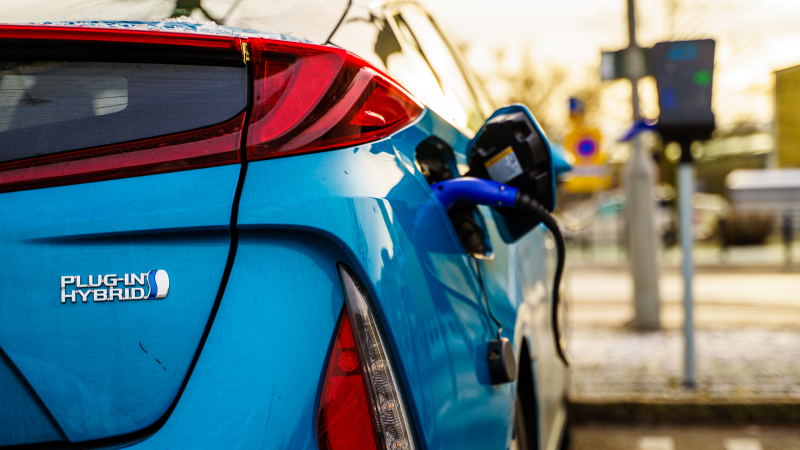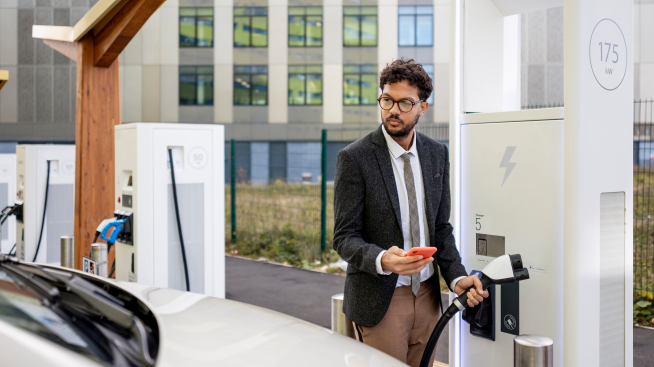Two types of hybrid cars to consider

Chances are you’ve heard of hybrid cars. But you may not be aware that there’s multiple types of hybrid cars – both “conventional” hybrids and plug-in electric vehicles (PHEV) run on a combination of gas-powered engines and battery-powered motors. Jamie Jones, General Manager, Chase Auto Private Label Captive Finance, explains some of the key details of the current options.
Hybrids 101
What makes a hybrid car a hybrid? As their name suggests, hybrids blend other driving technologies together. While the specifications vary, every hybrid car on the market uses two power sources: a battery-powered electric motor and a gas-fueled internal combustion engine.
Hybrids are known for using regenerative braking systems to recharge their batteries. This system takes the heat generated from traditional friction braking and shifts that energy to the battery instead of wasting it.
As a result, hybrid cars don’t burn as much gas as cars that rely solely on an internal combustion engine, reducing tailpipe emissions and saving you money at the pump. Some hybrids also experience a performance boost from their electric power source. On the flip side, hybrids’ purchase prices are higher than their gas-only counterparts, among other tradeoffs.
The hybrid family has two main branches: conventional hybrid electric vehicles (HEVs) and plug-in hybrid electric vehicles (PHEVs). On the hybrid spectrum between gas engines and electric batteries, HEVs lean more toward the gas side and PHEVs lean more toward the electric side.
Conventional Hybrid Cars (HEVs)
Conventional hybrid cars don’t have an external plug, relying solely on the vehicle's internal systems — namely, regenerative braking — to charge their relatively small battery. This design comes with pros and cons. On the plus side, HEVs:
- Have lower sticker prices than PHEVs, mainly due to HEVs’ modest batteries
- Don’t require external charging via a home charger or public chargers — a significant factor if you don’t have a dedicated parking space and/or don’t live near public charging infrastructure
- Have a larger gas tank than PHEVs, which can be more convenient, depending on your location and driving habits
- Are still quite fuel-efficient for city driving relative to non-hybrids, since the regenerative braking system charges the battery in stop-and-go traffic
At the same time, HEVs’ highway mileage isn’t much better than gas-only vehicles and their electric-only range is minimal or nonexistent.
Plug-in Hybrid Cars (PHEVs)
PHEVs are a step closer to fully electric vehicles (EVs). Here are the key differences:
- How they charge. Just like HEVs, PHEVs can still use their own internal systems to charge their batteries. But unlike conventional hybrids, PHEVs — as their name signals — can also plug into an external power source to charge up.
- Battery size. PHEV batteries are larger than HEV batteries (though EV batteries are even bigger). Just remember: The larger the battery size, the higher the sticker price, so be sure to check out what incentives and rebates may be available to you.
- Blended mode. All HEVs run on the so-called “blended” mode that uses both gas and electric technologies at the same time. Most PHEVs can do that, too. But unlike conventional hybrids, PHEVs can run on the battery alone – usually for about 20-40 miles, which is about the average daily commute for most Americans – or on gas alone once the battery is drained. Many electric driving enthusiasts like this feature, which allows them to “go electric” while still having the peace of mind of the “back-up” gas engine.
In summary
Hybrid cars blend technology from gas-powered engines and electric-powered motors. While both types of hybrids — conventional hybrid cars and plug-in hybrid cars — can help reduce your tailpipe emissions, conventional hybrids lean more toward the gas side of the spectrum and plug-in hybrids rely more on electricity.
When deciding which type of car might be right for you, consider your personal preferences, location, driving habits, commute factors, and budget. For PHEVs, also be sure to understand your plug-in charging options both at home and on the road, as well as whether you have any EV-trained mechanics in your area.
To learn more about EVs, visit www.Chase.com/EV.



